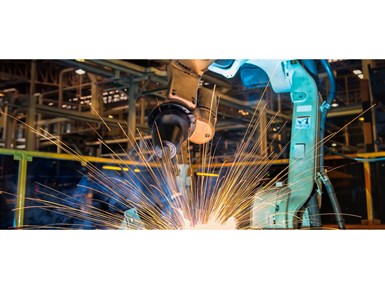DP Technology and Alma Develop Robot Additive DED Solution
DP Technology and Alma have partnered to create a complete programming solution for robot additive direct energy deposition.
Share






DP Technology, creators of ESPRIT CAM software for CNC use, have partnered with , a CAD/CAM provider for robotics, to create a complete programming solution for robot additive DED (direct energy deposition).

Additive DED is a series of metal 3D printing technologies that creates parts by melting and fusing material as it is deposited. Wire arc additive manufacturing (WAAM), also known as DED-arc, is an additive DED technology applied in robot additive DED to produce the near net shape preforms with significant cost and lead time reductions, increased material efficiency and improved component performance.
Compared to a machine tool-based DED machine, which can cost up to several million dollars, a robotic DED machine costs significantly less (close to $150,000 to $200,000). Additionally, many companies can retrofit existing programmable, industrial robots for additive DED applications. However, to program a robot to perform an additive DED task, an engineer must determine both the toolpath of the DED head and the robot arm movements that efficiently achieve the ideal toolpath.
To provide customers with an end-to-end solution for programming robot additive DED, DP Technology and Alma have pooled ESPRIT’s advanced toolpath planning in both subtractive and additive areas and Alma’s robotics trajectory computation technology and off-line programming of arc welding robots.
This solution allows Alma to use the full ESPRIT additive DED cycles such as 3x, 4x and 5x, bringing the software to a new level of support for additive technology. It also allows ESPRIT to support industrial robot brands including Yaskawa, ABB, FANUC and Kuka.
The result of this technology partnership is a complete workflow that provides end users with dedicated additive toolpath planning and programming; robot programming, simulation, verification, collision detection and code generation; and subtractive finishing process planning, simulation, verification, collision detection and G-code generation.
Related Content
-
Can ChatGPT Create Usable G-Code Programs?
Since its debut in late 2022, ChatGPT has been used in many situations, from writing stories to writing code, including G-code. But is it useful to shops? We asked a CAM expert for his thoughts.
-
Building A Powerful Bridge from the CAM Programmer to the Shop Floor Operator
SolidCAM for Operators provides a powerful bridge from CAM programming to the shop floor to best streamline the machine shop process with its CAM part simulation. It provides a clear picture to the operator for setup and prove-out, enables minor G-Code changes and avoids crashes, broken tools and scrapped parts.
-
TTI Brings Specialty Gear Production In-House with Multiaxis Machining
By investing in a 3+2-axis machine and utilizing simulation software for diagnostic checks, Techtronic Industries turned a four- to ten-week lead time into a one- to two-week lead time.















